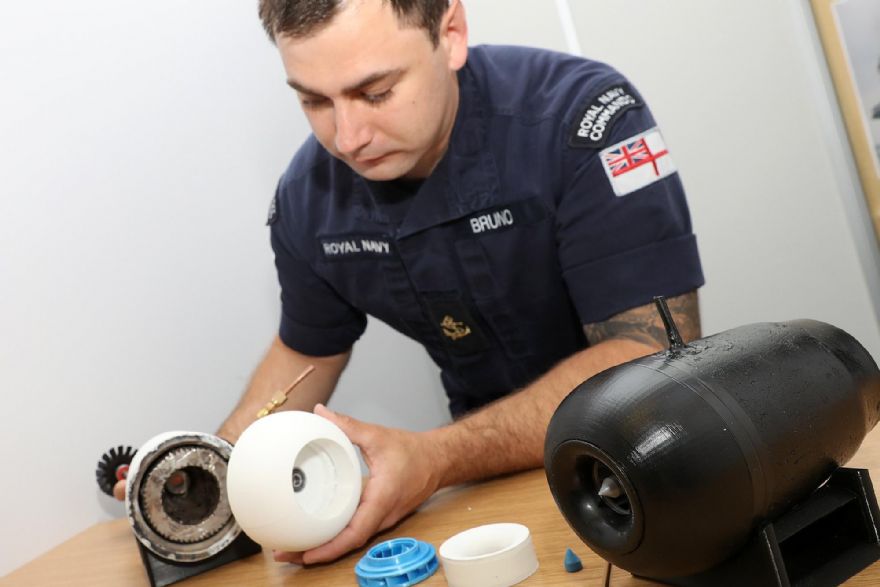
Portsmouth-based
The News recently featured an account of 27-year-old trainee marine engineer Ryan Bruno using 3-D printing technology to produce the parts for a small working gas turbine. He was selected for the Navy’s fast-track advanced apprentice scheme and recently completed 18 months’ training at HMS Sultan in Gosport as a leading engineer specialising in gas turbines and diesel engines.
Mr Bruno used a form of fire-resistant ‘concrete’ — tweaking the designs of Swedish inventor Axel Borg — and made use of 3-D design software to help build a 9in-long working jet engine that is started by an air compressor.
He said: “Building the gas turbine was an interesting project; it allowed me to learn more about 3-D computer-aided design and to explore new materials and processes.
“The project also highlights how 3-D printing technology provides the ability to produce complicated functioning components in your own home.”
As things stand, this mini jet is not a practical engine; it is rather a ‘demonstrator first step’. There is little thrust (due to the materials used), and the nozzle guide vanes, which direct the flow of air onto the turbine blades, only have a life span of about 45min.
When he gets the chance, Mr Bruno hopes to re-build his engine using metals — and to include a few improvements.